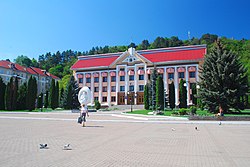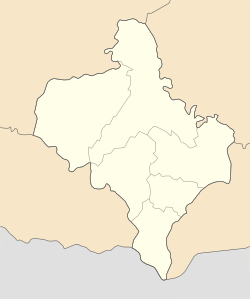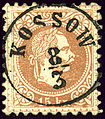
Bukovina is a historical region in Eastern Europe. The region is located on the northern slopes of the central Eastern Carpathians and the adjoining plains, today divided between Romania and Ukraine.

Halych is a historic city on the Dniester River in western Ukraine. The city gave its name to the Principality of Halych, the historic province of Galicia (Halychyna), and the Kingdom of Galicia–Volhynia, of which it was the capital until the early 14th century, when the seat of the local rulers moved to Lviv.
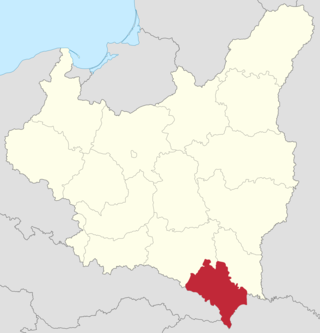
Stanisławów Voivodeship was an administrative district of the interwar Poland (1920–1939). It was established in December 1920 with an administrative center in Stanisławów. The voivodeship had an area of 16,900 km2 and comprised twelve counties (powiaty). Following World War II, at the insistence of Joseph Stalin during the Tehran Conference of 1943, Poland's borders were redrawn, Polish population forcibly resettled and Stanisławów Voivodeship was incorporated into the Ukrainian Soviet Socialist Republic as Stanislav Oblast.

Belz is a small city in Lviv Oblast, western Ukraine, located near the border with Poland between the Solokiya River and the Richytsia stream. Belz hosts the administration of Belz urban hromada, one of the hromadas of Ukraine. Its population is approximately 2,191.

Kolomyia, formerly known as Kolomea, is a city located on the Prut River in Ivano-Frankivsk Oblast (province), in western Ukraine. It serves as the administrative centre of Kolomyia Raion (district). The city rests approximately halfway between Ivano-Frankivsk and Chernivtsi, in the centre of the historical region of Pokuttya, with which it shares much of its history. Kolomyia hosts the administration of Kolomyia urban hromada, one of the hromadas of Ukraine. The population is 60,821.
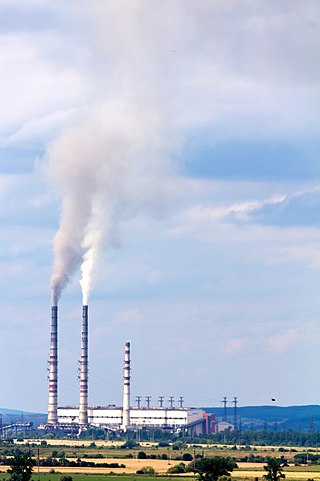
Burshtyn is a city located in Ivano-Frankivsk Oblast, in western Ukraine, to the north of Halych. It is accessible by rail. Burshtyn hosts the administration of Burshtyn urban hromada, one of the hromadas of Ukraine. Population: 14,737.

Kuty, also known historically as Kitów, is a rural settlement in Kosiv Raion, Ivano-Frankivsk Oblast, western Ukraine. It is situated on the Cheremosh River. It is one of the historical centres of the ancient region of Pokuttya, the name of which may derive from the township. The current population estimate is 4,001. Kuty hosts the administration of Kuty settlement hromada, one of the hromadas of Ukraine, which consists of Kuty township and 6 villages.

Zhovkva is a city in Lviv Raion, Lviv Oblast (region) of western Ukraine. Zhovkva hosts the administration of Zhovkva urban hromada, one of the hromadas of Ukraine. Its population is approximately 13,852.

Galician Jews or Galitzianers are members of the subgroup of Ashkenazi Jews originating and developed in the Kingdom of Galicia and Lodomeria and Bukovina from contemporary western Ukraine and from south-eastern Poland. Galicia proper, which was inhabited by Ruthenians, Poles and Jews, became a royal province within Austria-Hungary after the Partitions of Poland in the late 18th century. Galician Jews primarily spoke Yiddish.

Husiatyn is a rural settlement in Chortkiv Raion, Ternopil Oblast, western Ukraine. It hosts the administration of Husiatyn settlement hromada, one of the hromadas of Ukraine. Husiatyn is located on the west bank of the Zbruch River, which once formed the old boundary between Austria-Hungary and the Russian Empire in the 19th century, and the boundary between Poland and the Soviet Union during the 1920s and 1930s. The population is 7,032.

Horodenka is a city located in Kolomyia Raion, Ivano-Frankivsk Oblast, in Western Ukraine. It hosts the administration of Horodenka urban hromada, one of the hromadas of Ukraine. Population: 8,812. In 2001 the population was around 9,800.

Staryi Sambir is a city in Sambir Raion, Lviv Oblast of western Ukraine, close to the border with Poland. Staryi Sambir hosts the administration of Staryi Sambir urban hromada, one of the hromadas of Ukraine. Its population is approximately 6,440.

Kosov is the name of a Hasidic dynasty founded by Rabbi Menachem Mendel Hager of Kosiv, a town in Galicia, presently in Ukraine.

Peremyshliany is a small city in Lviv Raion, Lviv Oblast (region) of Ukraine. It hosts the administration of Peremyshliany urban hromada, one of the hromadas of Ukraine. Population: 6,415.

Bolekhiv is a city in Kalush Raion, Ivano-Frankivsk Oblast, Ukraine. It was once home to a large Jewish community, very few of whom survived World War II. Bolekhiv hosts the administration of Bolekhiv urban hromada, one of the hromadas of Ukraine. Population: 10,259.

Busk is a city located in Zolochiv Raion in Lviv Oblast (region) of western Ukraine. It hosts the administration of Busk urban hromada, one of the hromadas of Ukraine. Population: 8,662.

Vorokhta is a rural settlement located in the Carpathian Mountains on Prut River in Ukraine. It is part of Nadvirna Raion, Ivano-Frankivsk Oblast. Historically, it is a tourist spa town and later was also turned into a ski resort with several ski-jumping ramps (Avanhard). Vorokhta hosts the administration of Vorokhta settlement hromada, one of the hromadas of Ukraine. Population: 4,207 ; due to a constant flow of tourists, its population almost year-round is bigger.

Verkhovyna, known as Zhabie until 1962, is a rural settlement in Ivano-Frankivsk Oblast, western Ukraine. Verkhovyna serves as the administrative center of Verkhovyna Raion. It also hosts the administration of Verkhovyna settlement hromada, one of the hromadas of Ukraine. Population: 5,773.
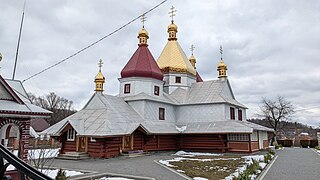
Pechenizhyn is a Rural settlement in Kolomyia Raion, Ivano-Frankivsk Oblast, Ukraine, 11 kilometres (7 mi) west of Kolomyia. It hosts the administration of Pechenizhyn settlement hromada, one of the hromadas of Ukraine. Its population is 5,197.

Sylvester Kossów, Kosiv or Kosov was the Metropolitan of Kiev, Galicia and all Rus' in the Ecumenical Patriarchate of Constantinople in the Eastern Orthodox Church from 1647 to 1657. He reigned during the Khmelnytsky uprising.
